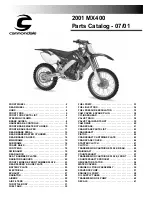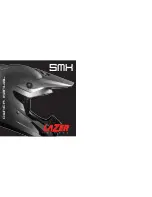
Maintenance
107
Tire Inflation Pressures
Correct inflation pressure will provide
maximum stability, rider comfort and
tire life. Always check tire pressures
before riding when the tires are cold.
Check tire pressures daily and adjust if
necessary. See the Specification section
for details of the correct inflation
pressures.
Warning
Incorrect tire inflation will cause
abnormal tread wear and instability
problems that may lead to loss of
control and an accident.
Underinflation may result in the tire
slipping on, or coming off the rim.
Overinflation will cause instability and
accelerated tread wear.
Both conditions are dangerous as they
may cause loss of control leading to an
accident.
Tire Pressure Monitoring System (if
equipped)
The tire pressures shown on your
instruments indicate the actual tire
pressure at the time of selecting the
display. This may differ from the
inflation pressure set when the tires are
cold because tires become warmer
during riding, causing the air in the tire
to expand and increase the inflation
pressure. The cold inflation pressures
specified by Triumph take account of
this.
Owners must only adjust tire pressures
when the tires are cold using an
accurate pressure gauge, and must not
use the tire pressure display on the
instruments.
Tire Wear
As the tire tread wears down, the tire
becomes more susceptible to punctures
and failure. It is estimated that 90% of
all tire problems occur during the last
10% of tread life (90% worn). It is
therefore not recommended to use tires
until they are worn to their minimum.
Minimum Recommended Tread
Depth
In
accordance
with
the
periodic
maintenance chart, measure the depth
of the tread with a depth gauge, and
replace any tire that has worn to, or
beyond the minimum allowable tread
depth specified in the table below:
Under 80
mph
(130
km/h)
0.08
in (2
mm)
Over 80
mph
(130
km/h)
Rear 0.12
in (3
mm)
Front 0.08
in (2
mm)
Warning
This Triumph motorcycle must not be
operated above the legal road speed
limit except in authorized closed
course conditions.
















































